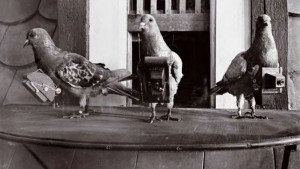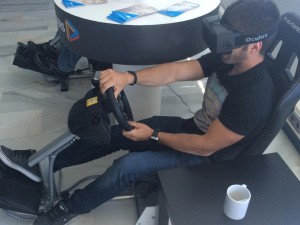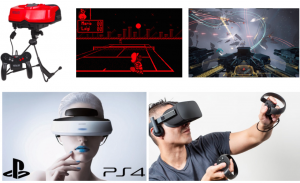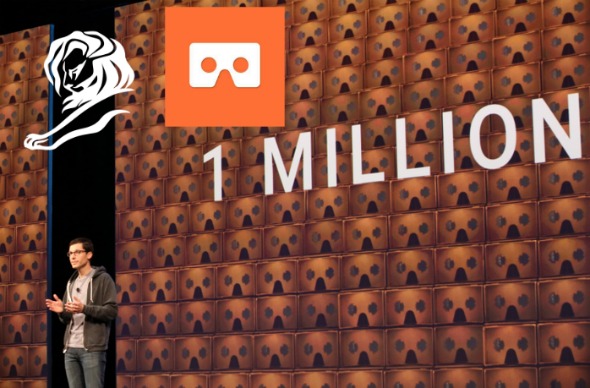Monday
19
Oct
Last October 6th, Miguel Hernandez University in the city of Elche organized a seminar for the Telecommunications Master Degree to which we had the pleasure to attend. Mr. Jesus Llor, PhD and Key Account Manager at Droiders lectured on Wearables, Streaming and Smart Glasses. He explained the recent history of wearables, the different kinds of smart glasses and their application through Augmented or Virtual Reality.
Nowadays we take for granted issues simply unthinkable 60 years ago. If Konrad Zuse, creator of the Z3, took a walk through a house or an office of our era, he would probably stare at a laptop for hours: our computers are not two meters tall (6.5 ft)do not have intermittent lights and do not weigh a ton.
Wearables, since their birth
The history of wearable devices goes back to the 17th century with the first abacus ring from China’s Qing Dynasty. This ring was used by traders to realize calculations so they carried it as a “calculator”. Is smart jewelry a product of recent years? Not even of the 20th century. “Smart rings” were in use in 1600 for buying and selling goods until calculation became a problem as well as carrying around a big abacus which was…quite uncomfortable.
In 1907, a German apothecary, Julius Neubronner, revolutionized aerial photography. He employed carrier pigeons to receive orders from a nearby sanatorium. One day, one of the carrier pigeons went astray and Neubronner then wanted to find out where his pigeons flew to when getting lost; so he decided to install a camera – his pigeons could carry up to 75 grams (2.7 oz) – and photograph their flight path. Photography was not even one hundred years old when Neubronner had designed his own miniaturized camera even with a built-in automatic trigger. From that moment on, he also used that method to captures images from above, for mere pleasure.This invention started being deployed during World War I in order to spy on the enemy, being a lot more useful, discrete and economic than a globe or an airplane. Pigeon Photography earned much recognition by the International Spy Museum and by the CIA.
During that same period, in 1914, and also throughout the World War II, the wrist watches were born as a substitute to uncomfortable pocket watches. Armies realized that soldiers could go astray if they had to put their hands in their pockets to synchronize timing, added to the rucksacks and weapons weight. Later, when soldiers went back from the war, the watch manufacturers did not miss any opportunities to introduce them to civil society, becoming a fashion.
Modern and popular GPS that has helped us in our traveling, was born in 1927. Inventor still unknown, but it really was the precedent of the gadget we use so much these days. First GPS was called “Plus Four Wristlet Route Indicator”. Any inconvenience? The driver had to turn the rollers with his/her free hand to be able to see indications on the go and when reaching a crossroad, a full stop was needed to change maps. Besides, it only brought about 20 maps of England starting in London.
In 1961, Edward O. Thorp and Claude Shannon designed the first “wearable computer” that could be hidden in shoes or in a pack of cigarettes. This device was used to predict a roulette wheel motion, picking up data with a microswitch that registered speed, so that the computer could indicate on when to bet by sending musical tones via radio into miniature speaker inside the ear.
The eighties came and Casio, the Japanese company, headed by Tadao Kashio who introduces, after 1974’s first digital watch, a similar model but a revolutionary innovation: a watch with calculator. It was precisely 1974 the starting shot to endless functionalities. Year after year, Casio implemented a new functionality: watches with radio, with games (Space Invaders!), with a keyboard, with melodies and, at its peak, with a remote control in 1994. The needles and tic-tac sound gave way due to Casiotron, marketing watches more complete and functional.
Definitely, the history of wearable tech is yet to be written. This is only the beginning of something really big that will mean a breakthrough in many fields. Thanks to wearables, we have had many innovations that have served the Ministry of Defence, advances in processing and calculation, photography and quantification, to name a few.
Another breakthrough that should have his own space is what happened in 2010. Somehow the brain is not conscious of the time that has passed, but it has been only five years ago since our devices can be connected to Internet. Something we see as so distant, in reality is very recent. Until 2010 wearable devices were not connected to Internet, they had their own functionality but could not connect to the cloud.
And today? The sky is the limit. There are many types of wearables with many kinds of prices, some more popular than others, but we see a lot of people in the street with at least one wearable.
Smartglasses: Augmented Reality (AR) and Virtual Reality (VR)
Since Google Glass was announced in 2013, many companies have launched their own Smartglasses. HTC Vive, Oculus Rift, PlayStation VR, Epson Moverio, Microsoft Holo Lens, Meta Glass, etc.
What is the difference between each other? The kind of experience the user may have. Augmented Reality (AR) is superimposed on the reality itself, while Virtual Reality (VR) is fully immersive.
As mentioned, VR gives the user an immersive experience, physical reality around him/her disappears to enter fully into a virtual world. What has been marketed more? Marketing and Video games. Advertising to increase a better experience and sensation to the future potential consumer. Video games to fully delve the user into the game and experience it completely when playing in a world of fantasy, horror or adventure.
Back to the real world. Augmented Reality, AR, generates a layer of information about our own physical reality and allows us to interact. In this case it has been marketed very similarly. Companies are always looking to be innovative, so users can position them as the most “techie”.
To summarize, the technology race has only just begun. Gradually we will see more and more different types of Smartglasses and wearables. Hopefully, the industry will grow beyond the purely business, not just geeks, begin to implement a wearable in their daily life.









